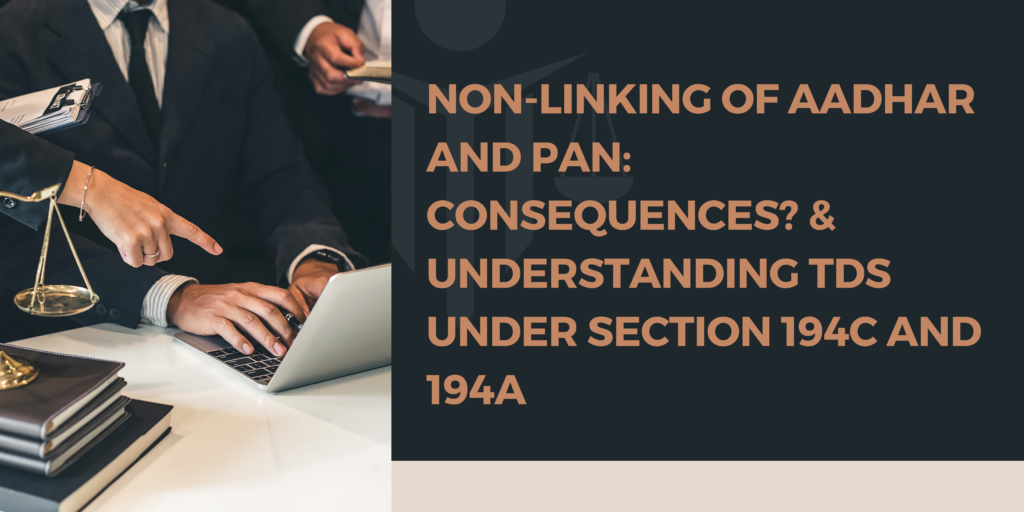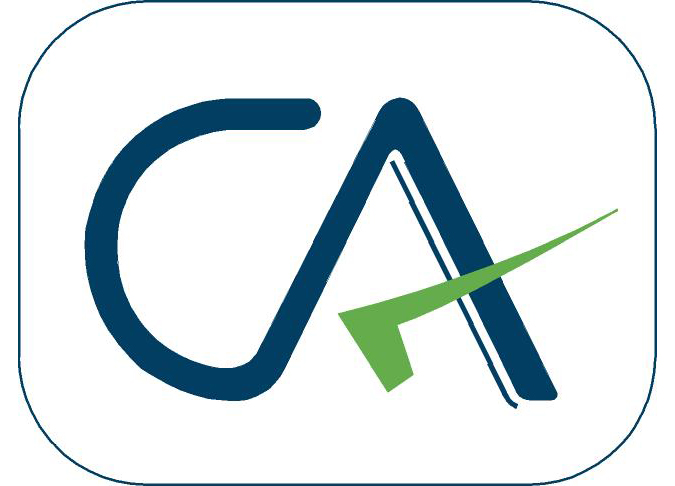
Through this piece of article, we would recognize the ramifications of TDS, the repercussions of failing to link PAN with Aadhaar by the deadline, and the important provisions of the Income Tax Act.
The repercussions of not linking your Aadhar and PAN would render your PAN card inactive. It is mandatory for everyone to link their PAN card with Aadhar. The first link-up deadline was March 31, 2022. It was free to link Aadhaar and PAN up until this point. Afterwards, the cost was Rs 500 from April 1, 2022, to June 30, 2022. However, the charge raised to Rs 1000 on July 1st, 2022, and remained that way until today.
For a charge of Rs. 1000, you can link your PAN card and Aadhaar card, as per the details shown above. The Income Tax website requires this payment to be made in the same year as the connection procedure. The payment is made using the “Head Other Receipt 500,” and the connecting process takes 48 hours to finish.
All people are now notified that a 20% TDS (Tax Deducted at Source) will be charged if their PAN and Aadhaar are not linked by July 1, 2023. 20% TDS will be withheld from your income until you link your PAN with Aadhaar. This deduction is effective immediately. The TDS slab will take effect as soon as you finish the linking procedure and thereby the deduction would be made at the prescribed rate as mentioned in the Income Tax Act, 1961.
The Income Tax Act of 1961’s Section 194C – TDS on Payments to Contractors and Subcontractors
The Income Tax Act of 1961 contains Section 194C, which deals with TDS on payments to contractors and subcontractors regarding payments to contractors and subcontractors. It guarantees that taxes are withheld at the point of income or at the payment whichever is earlier, streamlining the government’s tax collection procedure. This is a reference to help you comprehend Section 194C:
Relevance:
Who Must Withhold TDS?
TDS must be withheld from any payment made to a resident contractor for performing any job (including labour supply) under the terms of a contract.
Contract types included:
The character of contracts:
Contracts for the supply of products or services and contracts for labour, such as those involving advertising, broadcasting, and telecasting, are covered under Section 194C.
Limits on the threshold:
TDS must be withheld from payments made by a person or HUF to contractors under a single contract that exceeds Rs. 30,000.
– Other entities (businesses, firms, etc.): The threshold limit is Rs. 1,00,000 for other deductors.
TDS rate: –
Rate of TDS:
For payments made to a contractor who is an individual or HUF, the TDS rate under Section 194C is 1%; for payments made to a contractor other than individual or HUF, it is 2%.
Exceptions include:
Small-scale contractors:
TDS does not need to be deducted if the total of all payments made to a contractor or subcontractor during a financial year do not exceed Rs. 100,000. Rs 30000 for a single payment.
Compliance and Documentation: –
Payment and Deduction of TDS: –
TDS must be subtracted by the deductor either at the time of payment or when the contractor’s account is credited, whichever comes first. The government must receive the TDS that has been deducted and a TDS return must be submitted.
Section 194 A TDS Regarding Loan Interest:
Section 194 A TDS The tax at source (TDS) deduction on interest payments—aside from interest on securities—relates to interest on loans. This section describes the guidelines and processes for deducting TDS and relates to different kinds of interest payments. This is a reference to help you comprehend Section 194A:
Relevance:
Interest Types Covered:
Interest payments that aren’t related to securities are covered by Section 194A. Interest on loans, fixed deposits, recurring deposits, etc. are all included in this.
Limits on the threshold:
If the total interest paid or credited throughout the fiscal year is less than Rs. 5,000, TDS is not required to be deducted.
TDS rate: –
Rate of TDS:
The standard TDS rate under Section 194A is 10% in excess of Rs 5000.
Payment Method:
Give the government a deposit of:
TDS must be subtracted and deposited with the government by the person in charge of paying the interest. The TDS return must include a report on the TDS that was subtracted.
Compliance and Documentation: –
TDS Deduction and Payment:
If TDS is not paid at the time of payment, it must be paid at the time the payee’s account is credited, whichever comes first. The deductor is required to file TDS returns and deposit the TDS to the government within the allotted time.
Penalties for Failure to Comply:
Penalties for Failure to Deduct or Pay:
Penalties and interest may be incurred for failing to deduct TDS or for failing to pay the deducted TDS within the allotted period.
